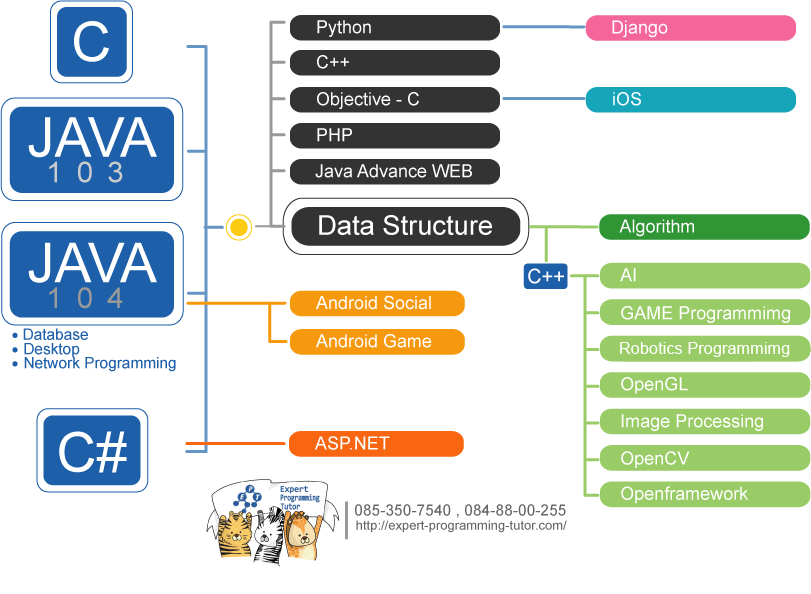เมื่อต้องการจัดการกับข้อมูลปริมาณมหาศาลในยุคดิจิทัล เราอาจเคยได้ยินถึงแนวคิดของฐานข้อมูลแบบ NoSQL ที่ช่วยในการจัดการข้อมูลแบบอิสระจากข้อจำกัดของฐานข้อมูลแบบดั้งเดิม (SQL) แต่เมื่อธุรกิจขยายตัว ความสามารถในการรองรับและการปรับขนาดของฐานข้อมูลก็เป็นสิ่งที่ต้องให้ความสำคัญในฐานข้อมูลแบบ NoSQL ภาษาไทยจะชวนคุณไปรู้จักการขยายฐานข้อมูลลักษณะนี้กัน
NoSQL ย่อมาจาก "Not Only SQL" เป็นฐานข้อมูลที่ออกแบบมาเพื่อตอบสนองความต้องการในการจัดการข้อมูลที่มีความหลากหลายไม่เป็นโครงสร้าง (unstructured) หรือเซมิ-โครงสร้าง (semi-structured) ด้วยประสิทธิภาพการประมวลผลที่รวดเร็ว จึงเหมาะกับการจัดการข้อมูลขนาดใหญ่ที่ต้องการความยืดหยุ่นมาก เช่น ข้อมูลจากสื่อสังคมออนไลน์, การธนาคาร, หรือการจัดการ Product Catalog
ในการขยายฐานข้อมูลแบบ NoSQL มีสองแนวทางหลักที่มักถูกพูดถึง ได้แก่ **การขยายแนวตั้ง (Vertical Scaling)** และ **การขยายแนวนอน (Horizontal Scaling)**
1. การขยายแนวตั้ง (Vertical Scaling):- คือการเพิ่มประสิทธิภาพของเครื่องเซิร์ฟเวอร์เดิมโดยเพิ่มขีดความสามารถของฮาร์ดแวร์ เช่น เพิ่ม RAM หรือ CPU วิธีนี้มีข้อจำกัดเมื่อเซิร์ฟเวอร์ถึงขีดจำกัดสูงสุด
2. การขยายแนวนอน (Horizontal Scaling):- คือการเพิ่มจำนวนเซิร์ฟเวอร์ใหม่เพื่อรองรับการประมวลผลข้อมูลที่เพิ่มขึ้น วิธีนี้เป็นที่นิยมใน NoSQL เพราะสามารถปรับขยายได้อย่างมีประสิทธิภาพและยืดหยุ่น ตัวอย่างที่เห็นได้บ่อยได้แก่การใช้ Apache Cassandra หรือ MongoDB ที่สามารถกระจายข้อมูลไปยังหลายๆ โหนดเพื่อรองรับภาระงาน
การเลือกประเภทของการขยายขึ้นอยู่กับปัจจัยต่างๆ เช่น ชนิดของข้อมูล ปริมาณการเติบโต ความเร็วที่ต้องการ และงบประมาณในการดำเนินการ
ตัวอย่างเช่น หากบริษัทค้าปลีกต้องการข้อมูลเกี่ยวกับการขายแบบเรียลไทม์เพื่อนำมาวิเคราะห์เพื่อปรับปรุงกลยุทธ์การตลาด ควรเลือกใช้ Horizontal Scaling เพื่อให้สามารถรองรับปริมาณข้อมูลจำนวนมากได้อย่างต่อเนื่อง
ลองมาพิจารณาตัวอย่างการใช้งาน MongoDB เพื่อเพิ่มความเข้าใจ:
// การตั้งค่า Replica Set ใน MongoDB เพื่อเพิ่มการปฏิบัติการแบบ Horizontal Scaling
rs.initiate(
{
_id: "rs0",
members: [
{ _id: 0, host: "mongodb1.example.net:27017" },
{ _id: 1, host: "mongodb2.example.net:27017" },
{ _id: 2, host: "mongodb3.example.net:27017" }
]
}
)
ในตัวอย่างนี้ MongoDB ได้ดำเนินการตั้งค่า Replica Set เพื่อให้สามารถจัดการและปรึกษาข้อมูลแบบกระจายตัว ซึ่งเป็นส่วนหนึ่งของการทำ Horizontal Scaling
การเข้าใจเกี่ยวกับ Scaling ใน NoSQL เป็นสิ่งสำคัญสำหรับผู้ที่ต้องการสร้างระบบให้สามารถขยายตัวได้ตามการใช้งานที่เพิ่มขึ้น การเลือกใช้การขยายแนวตั้งหรือแนวนอนขึ้นอยู่กับความต้องการเฉพาะของธุรกิจและรูปแบบข้อมูลที่ใช้งานอยู่ โดยมีข้อดีและข้อจำกัดที่แตกต่างกัน
หากคุณสนใจที่จะเรียนรู้เกี่ยวกับการออกแบบ จัดการ และขยายฐานข้อมูล รวมถึงศาสตร์การเขียนโปรแกรมเพิ่มเติม สามารถพิจารณาหลักสูตรของเราได้ที่ Expert-Programming-Tutor ที่จะช่วยให้คุณเข้าใจและมีทักษะในการจัดการดาต้าเบสและโปรแกรมมิ่งที่แข็งแกร่งมากยิ่งขึ้น!
หมายเหตุ: ข้อมูลในบทความนี้อาจจะผิด โปรดตรวจสอบความถูกต้องของบทความอีกครั้งหนึ่ง บทความนี้ไม่สามารถนำไปใช้อ้างอิงใด ๆ ได้ ทาง EPT ไม่ขอยืนยันความถูกต้อง และไม่ขอรับผิดชอบต่อความเสียหายใดที่เกิดจากบทความชุดนี้ทั้งทางทรัพย์สิน ร่างกาย หรือจิตใจของผู้อ่านและผู้เกี่ยวข้อง
หากเจอข้อผิดพลาด หรือต้องการพูดคุย ติดต่อได้ที่ https://m.me/expert.Programming.Tutor/
Tag ที่น่าสนใจ: java c# vb.net python c c++ machine_learning web database oop cloud aws ios android
หากมีข้อผิดพลาด/ต้องการพูดคุยเพิ่มเติมเกี่ยวกับบทความนี้ กรุณาแจ้งที่ http://m.me/Expert.Programming.Tutor
085-350-7540 (DTAC)
084-88-00-255 (AIS)
026-111-618
หรือทาง EMAIL: NTPRINTF@GMAIL.COM
